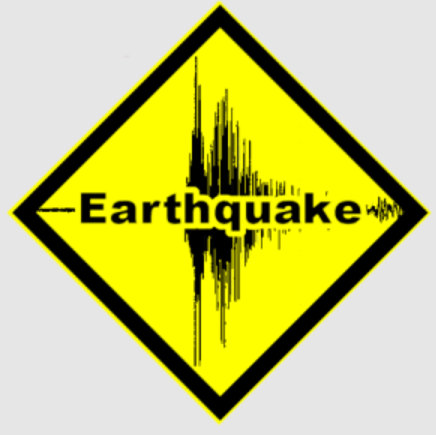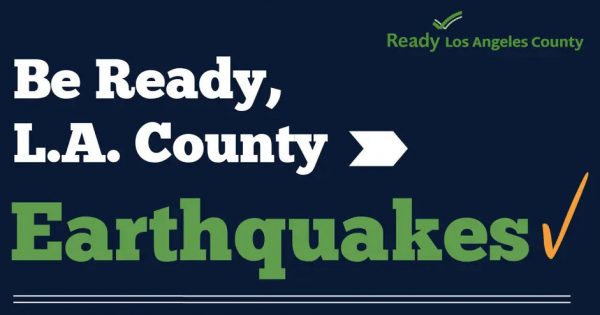“Always on my mind…”
Two recent articles in the LA Times were stark reminders to me of how humans seem never to learn from our own mistakes and, especially, from the warning cards which Nature deals out to us. Novelist and humanist Kurt Vonnegut once remarked that “History is merely a list of surprises. It can prepare us only for more surprises.”

The first Times article was a trip back to 1994 and the Northridge earthquake. In 1971 the Sylmar earthquake was thought for a time to have been “the Big One” because it was felt over such an area and was so devastating. Those events were far enough in the past to not be real to a great many people now living in Southern California. These event was certainly real for the 57 people who were killed and the reported 200 who were injured in the Northridge quake. It was real to some drivers of at least two freeways when sections of the roadway gave way in front of them and collapsed out of sight of the panicked drivers.
It was real to me when I was asked to join as the safety officer for the detail committed to dynamiting and removing a number of the remaining freeway structures. “A wakeup call!” screamed the Times’ headline, and for a while people committed themselves to such projects as securing chimneys, making their house foundations secure, purchasing emergency food and water, making plans for the possibility of evacuations. But, as I mentioned above, those events are but history to a majority of the Los Angeles population. Yet, the “Big One” is still a constant spectre as our town sits astride the Inglewood fault and others without names. Are you ready for the ride?
In West Hollywood, a small group of residents joined the Disaster Volunteer Corps (DVC), a program the then-manager of public safety and I designed for all residents to learn how to take care of themselves and possibly their neighbors, knowing that the fire department and other professionals would not be immediately available to all – perhaps not for as long as a week under the worst conditions.
We even produced a booklet called West Hollywood Is Prepared – the WHIP booklet – which I believe is still in print. It was meant to give residents an outline to follow for self-preservation after a natural disaster, principally an earthquake.
Our efforts were eclipsed by the formation of the Community Emergency Response Team (CERT), designed by the City of Los Angeles Fire Department and based on information gained from discussions with Japan and its formalized response plans to earthquakes which plague that island country. (Coincidentally, 10 years later the annual meeting of The International Association of Fire Chiefs was held in Kobe, Japan, the very day of a 7.2 earthquake which leveled much of the city. A great deal about emergency response was garnered by the fire chiefs during the rest of their stay there.)
CERT, as the civilian training program is now known, has been adopted throughout most of the developed nations and is a prominent feature of many US city’s emergency response planning. When we examined the CERT program, we saw that it was far superior and simpler than our Disaster Volunteer Corps. The city agreed with our assessment and sent me, two other residents and one city employee to the Federal Emergency Management Institute’s training facility in Maryland to become CERT trainers. Within less than two years of our return we had “certified “ nearly 200 volunteers from the resident population.
Within the city’s emergency response plans, CERT was given a desk in the Emergency Operations Center to oversee CERT activities and handle “convergent” volunteers, those who show up at the scene mostly without certifiable skills but who wish to be of some assistance during the event. The initial goal of CERT was to train enough people to have one CERT person in every apartment or condo building and at least one on every block in the city. We also had important plans to bring the business community into the CERT fold.

Then abruptly, without a word, the city withdrew its sponsorship of CERT. It has been only through the efforts of resident Kevin Burton that CERT continues on its own. The County offers training now. I have never received a reasonable answer why the city abandoned CERT. I believe that the city attorney felt that the risk of liability was too high – despite the state’s Good Samaritan law and our signed waivers.
It had to be sometime around 1986 that I first heard much about Lucy Jones. A seismologist with the US Geological Survey, she was often called upon for TV interviews sometimes with Kate Hutton, a well-known CalTech seismologist, following any sizable earthquakes in California. Hutton was known locally as “the earthquake lady.” In recent years, Jones has become more familiar to readers and viewers of the news media.
The second LA Times article was on the Op-ed page of Thursday, February 25, 2021 edition, Jones offers her current assessment of California’s degree of preparedness for natural disasters. It is the sort of essay which every citizen should read. The title, “Don’t be smug about Texas’ troubles. California isn’t prepared for disasters either.” What is presented is a thoughtful, concise view of areas of concern in our infrastructure and our state’s current approach to those concerns. This is a scientist speaking and although her tone is even and somewhat muted, her words should sound a klaxon warning to us all.
Dr. Jones speaks of our woefully inadequate and disjointed water system, of the age and condition of water pipes throughout the distribution scene. Talk to a Texan about going without potable water for a week. It could be worse for us, our area is so large and dispersed. She speaks also about building codes which lack foresight and require plans only for that which has already happened. She offers a bleak picture of the state’s – and local municipalities, of course – readiness for the growing challenge to deal with many types of continuing disasters in the world of climate change.
What can we simple citizens do to prepare? These words have been printed and spoken for decades:
- Consider being without utilities for at least three days – set up a food supply for a minimum of three days, and a gallon of water per person per day
- Make a plan for survival, possibly for evacuation; consolidate your important personal records
- Designate an out of state contact who can check on your well-being
- Take the time to become CERTified and learn the skills you may need to survive the aftermath of a disaster.
That’s the short list and doesn’t cover people with disabilities not the care of animal companions, nor working with neighbors for common needs. Who can recall the past earthquakes which rattled him? Few of us. I remember only the big ones, Sylmar and Northridge. The lack of memory is not a feature of age, it’s common in everyone. This is why we put things off – “I’ll do that tomorrow” – but “procrastination is the thief of time!”
And the pictures on the wall started to rattle and the glassware in the cupboard clanged and – whoops – something fell to the floor and the dog is under the bed, and….
****
EDITOR’S NOTE: There are two Earthquake Preparedness-related events coming up:
- Sunday, March 7 from 11 a.m. to 3 p.m. – 3rd Annual Westside Safety and Preparedness Fair online.
- Wednesday, March 17 at 7 p.m. – Earthquake Financial Preparedness seminar online.
